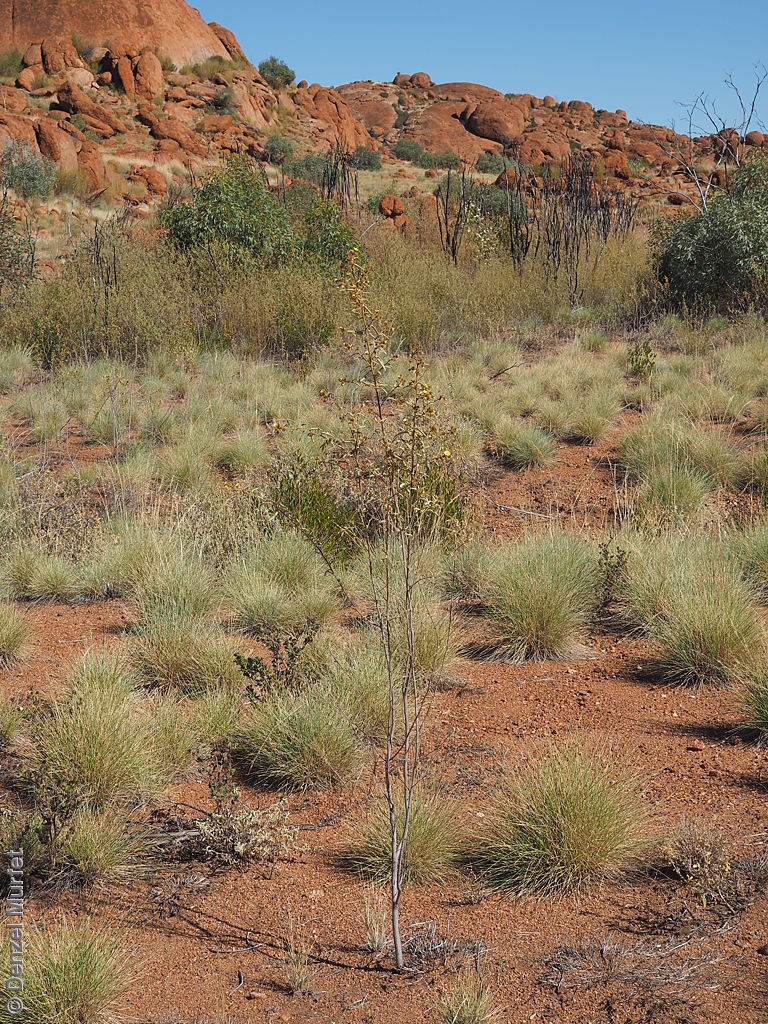
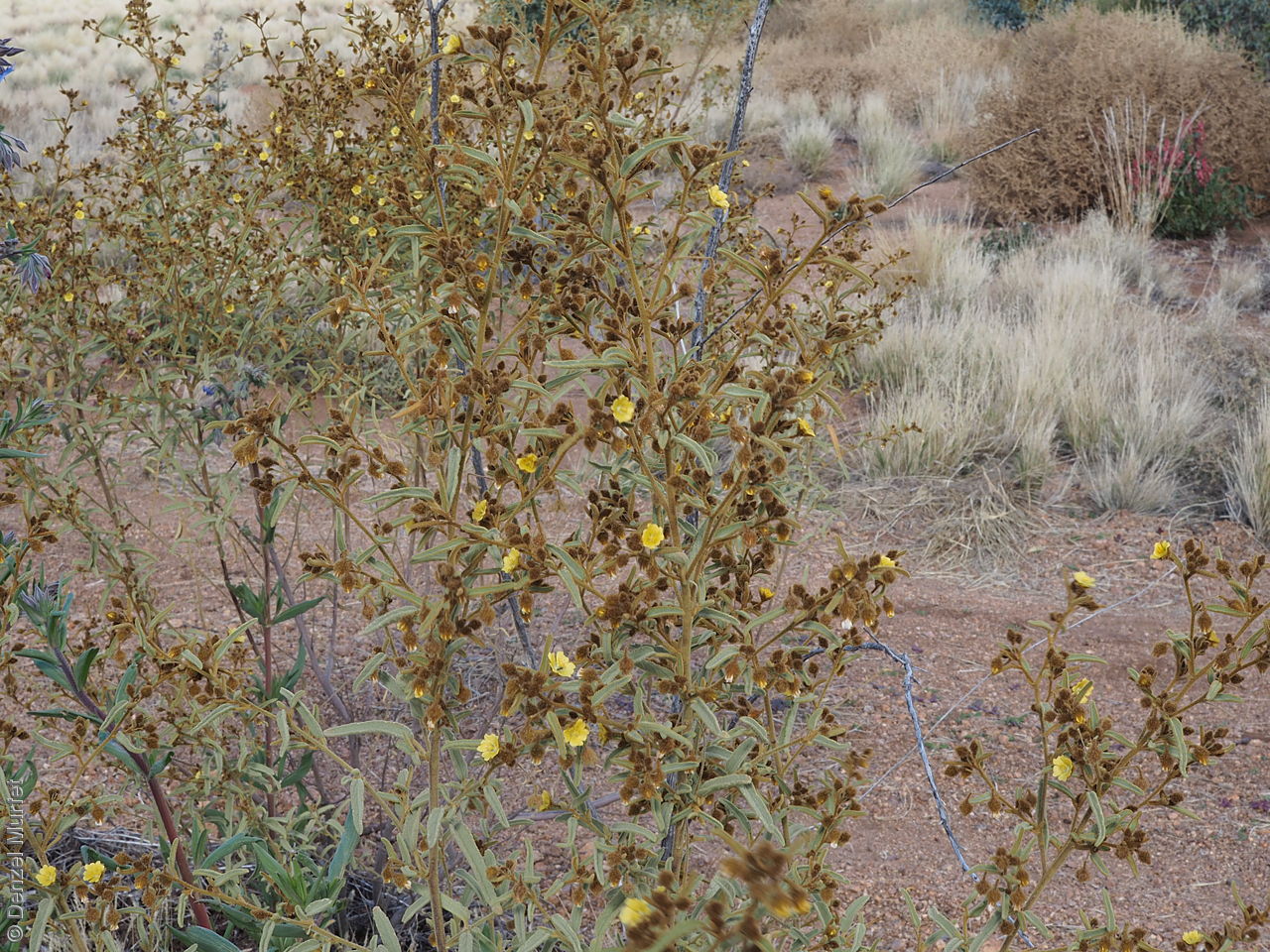
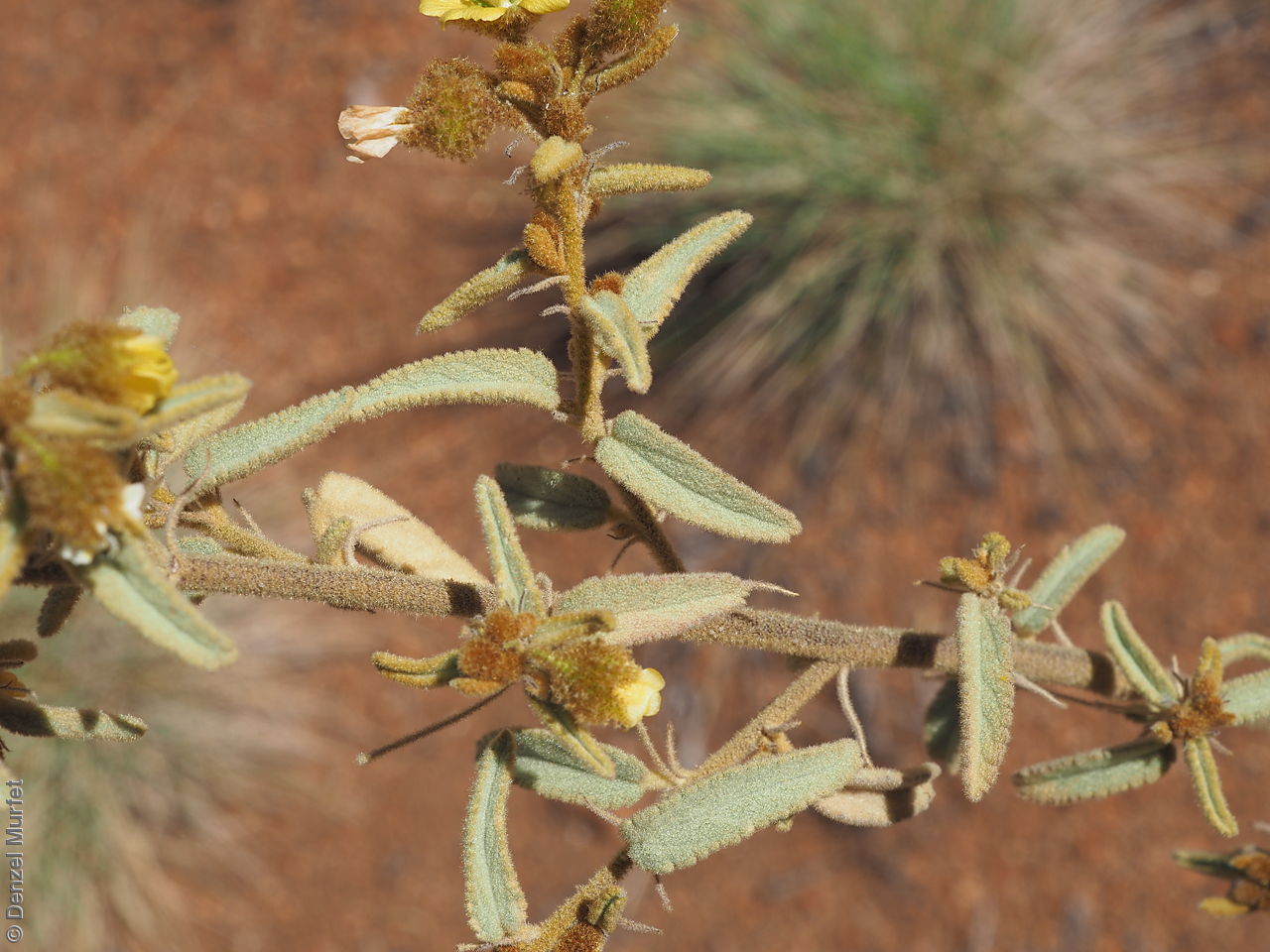
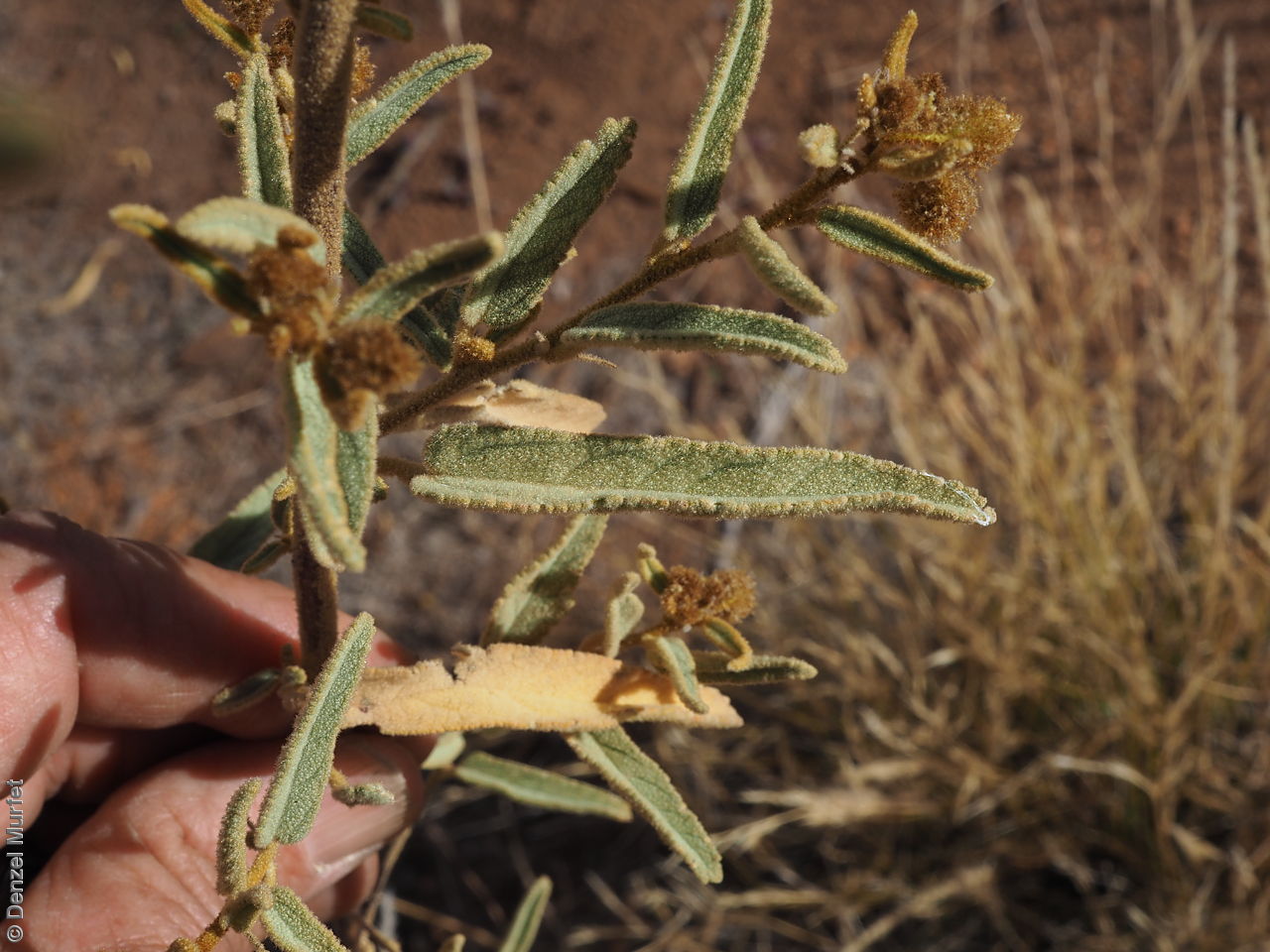
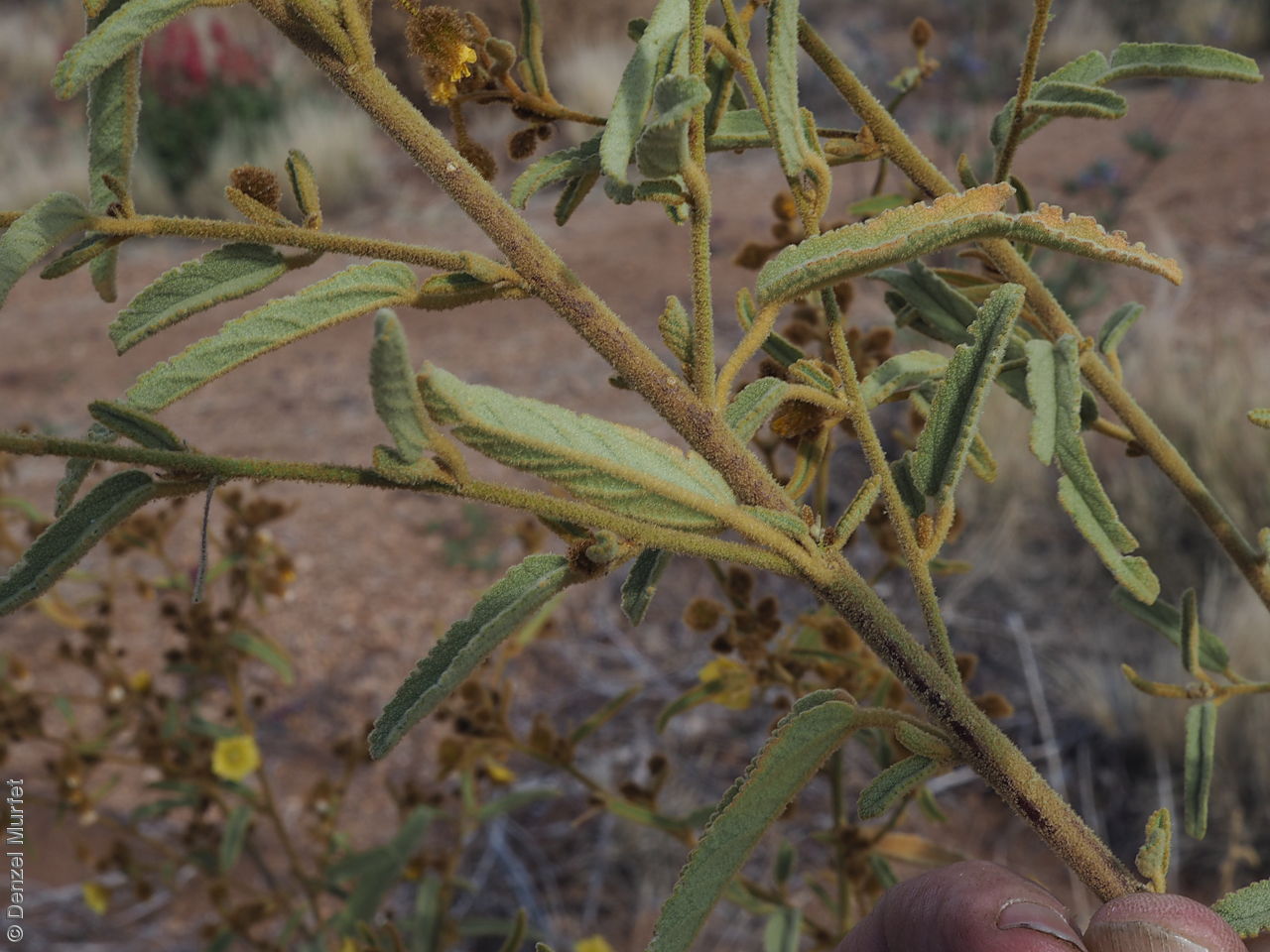
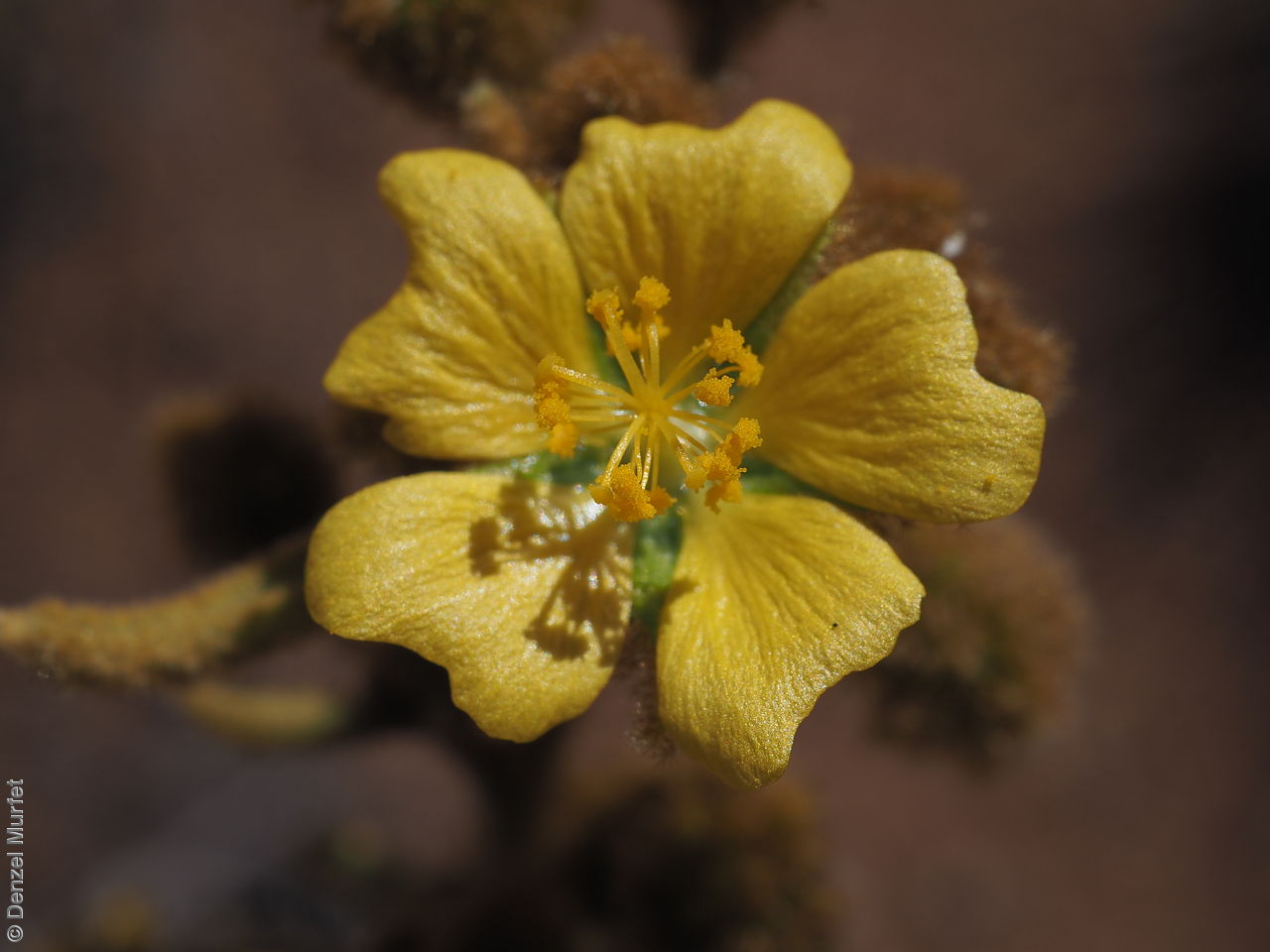
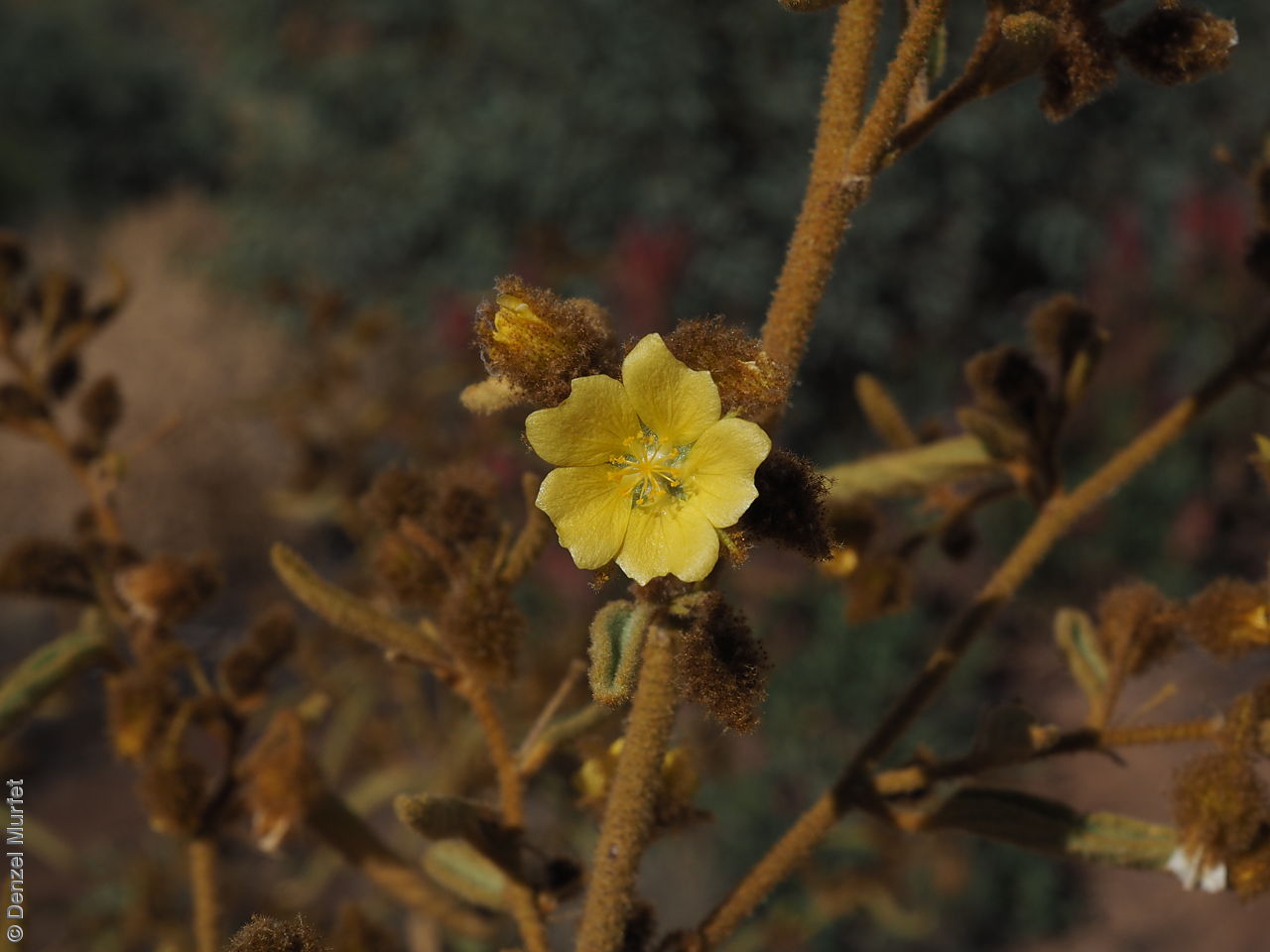
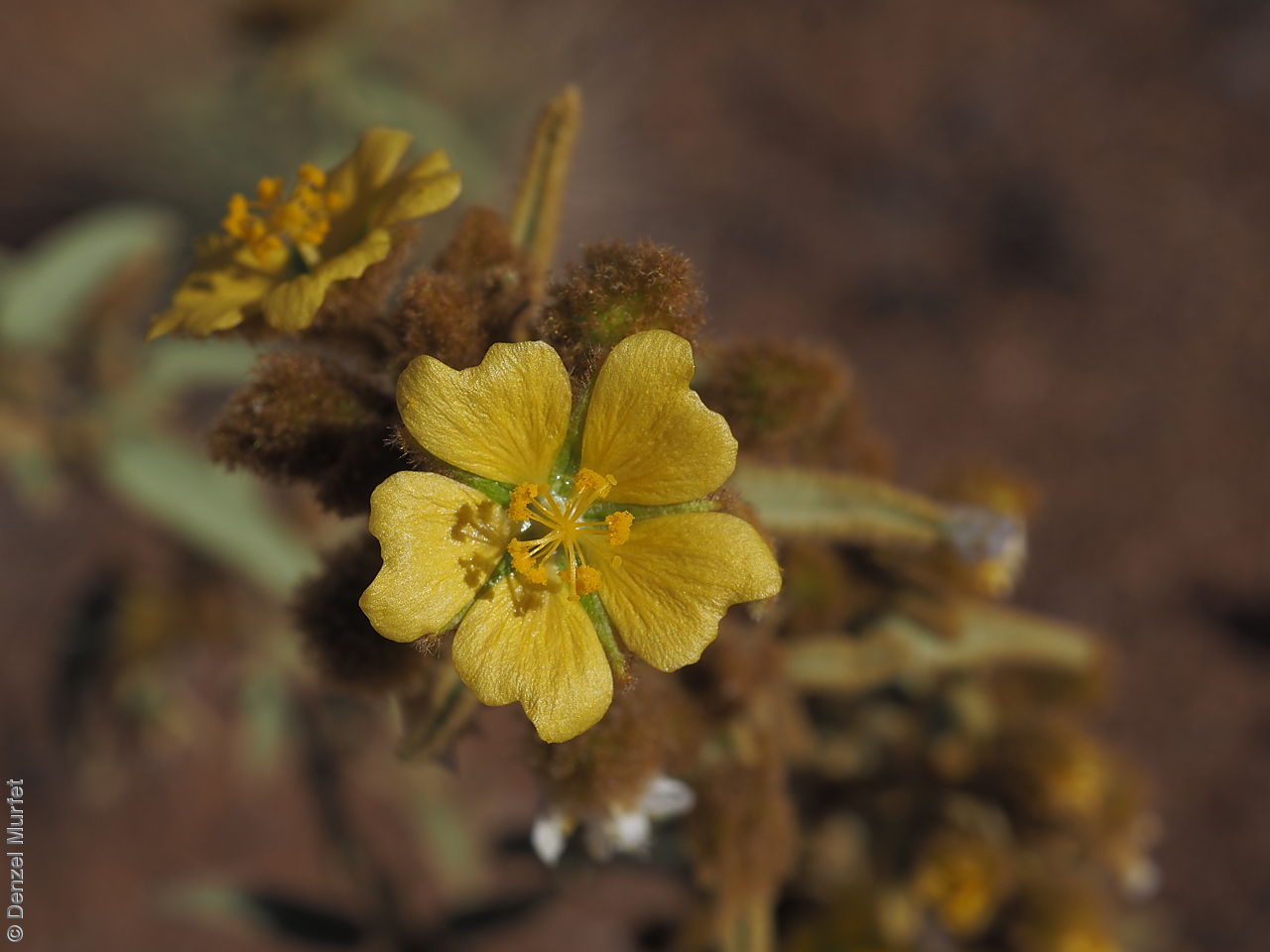
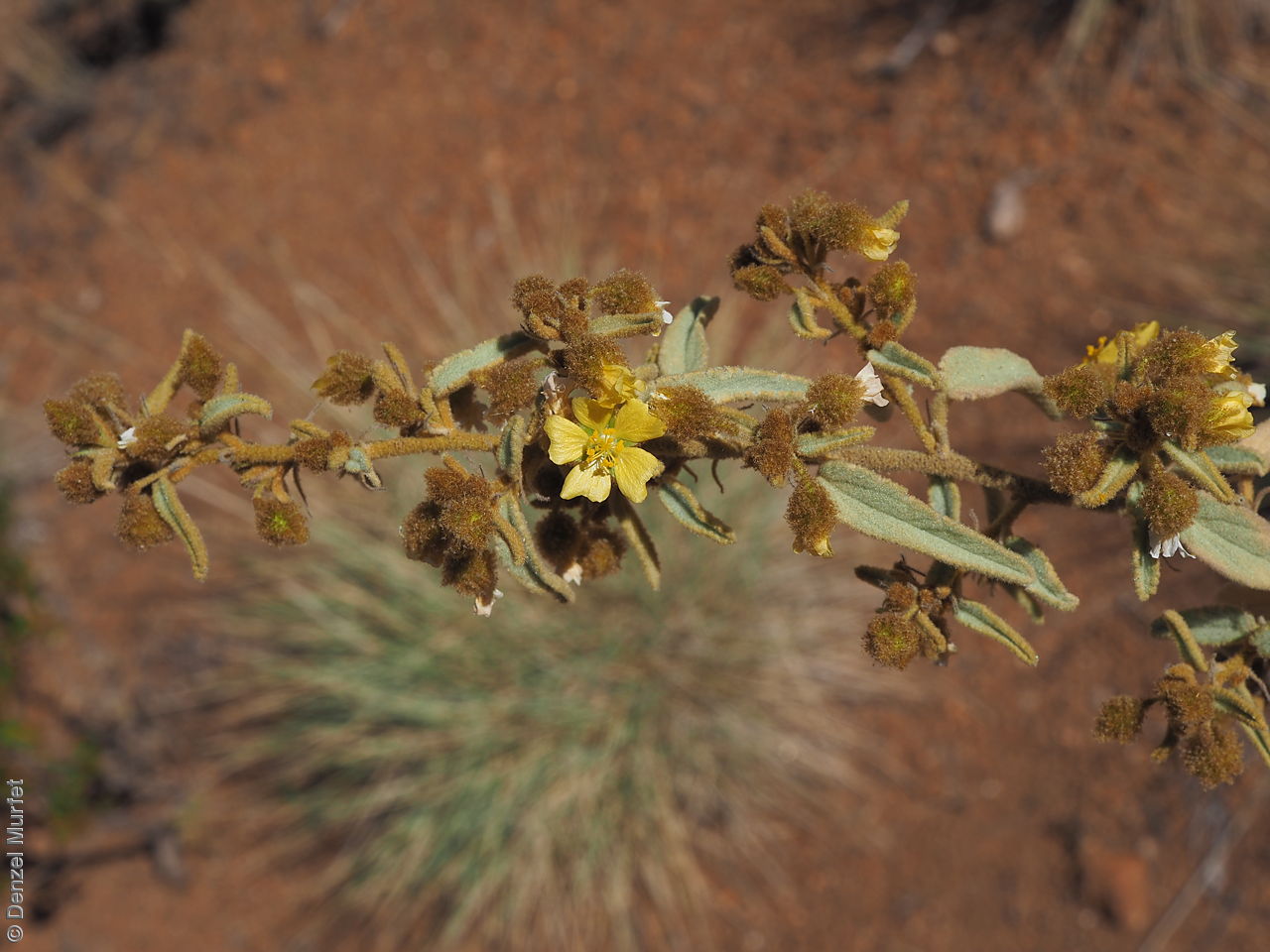
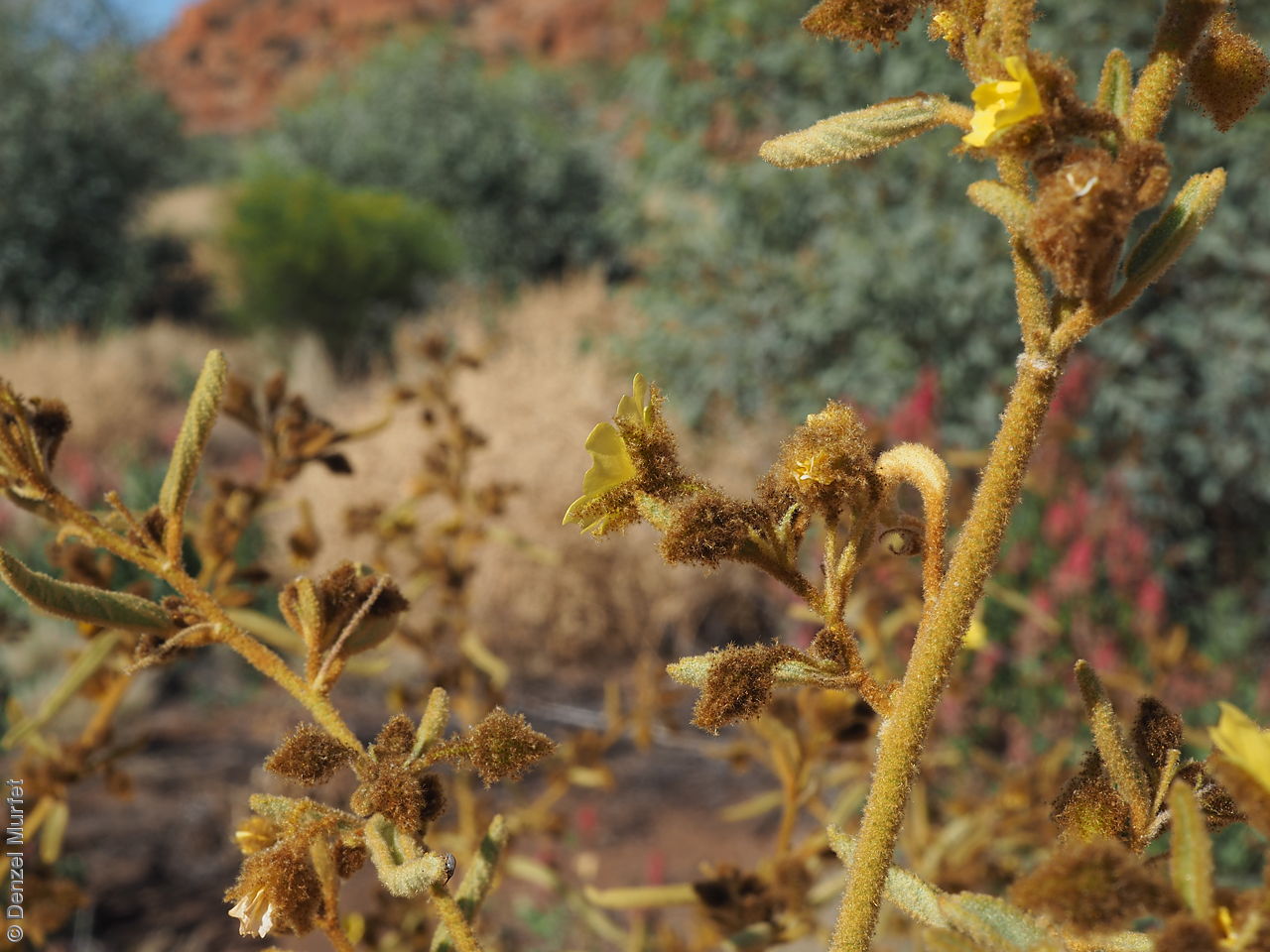
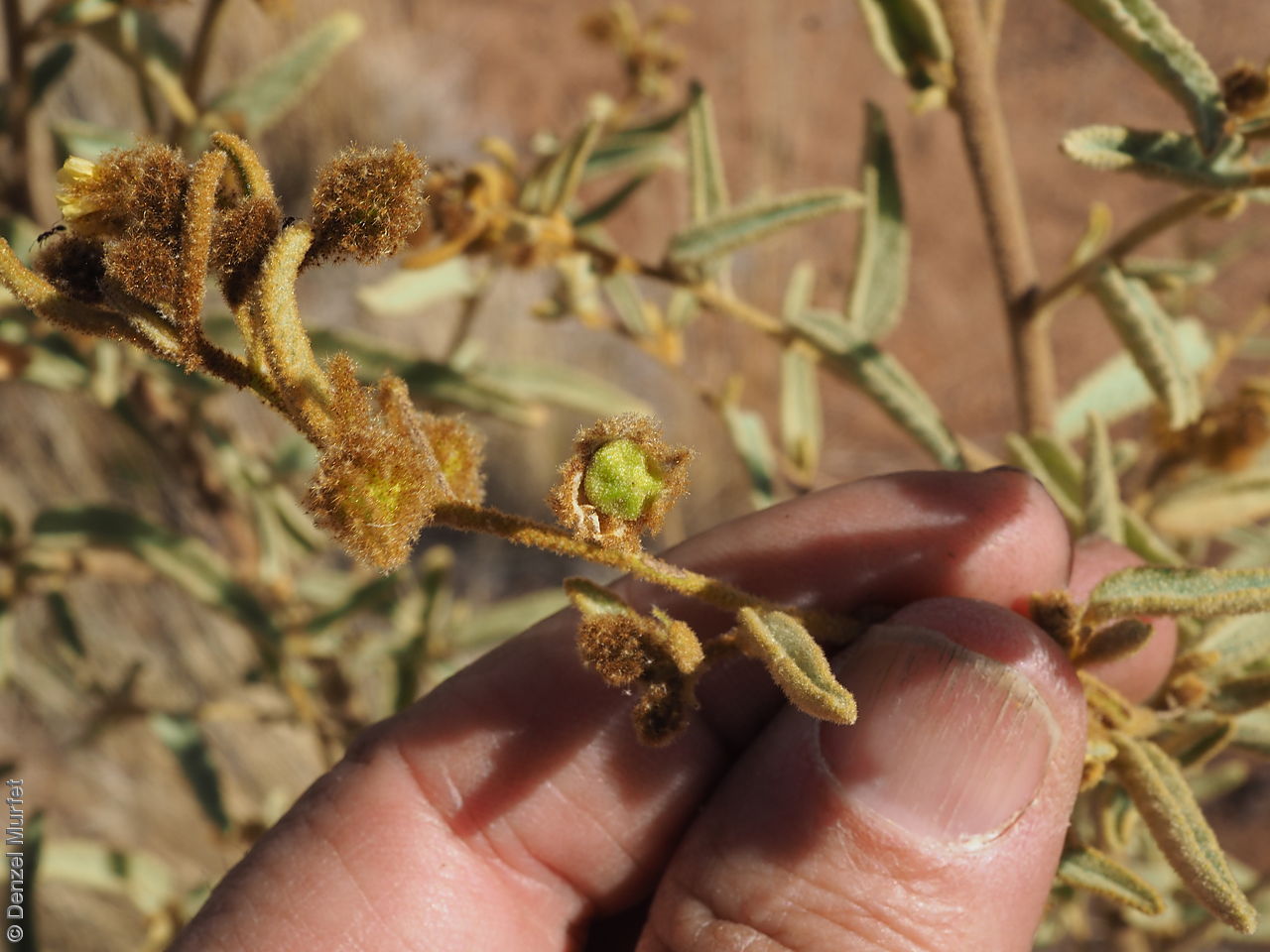
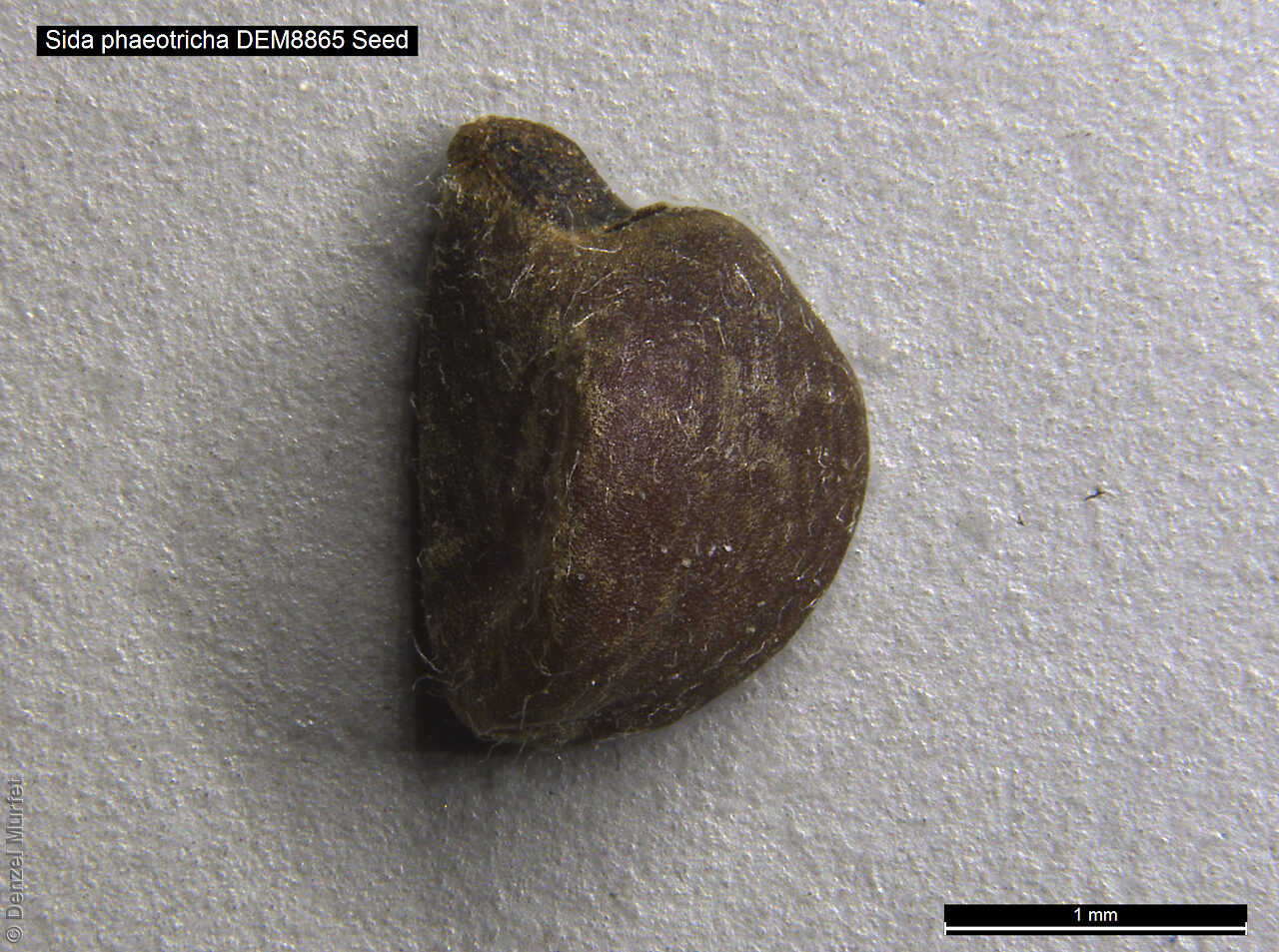
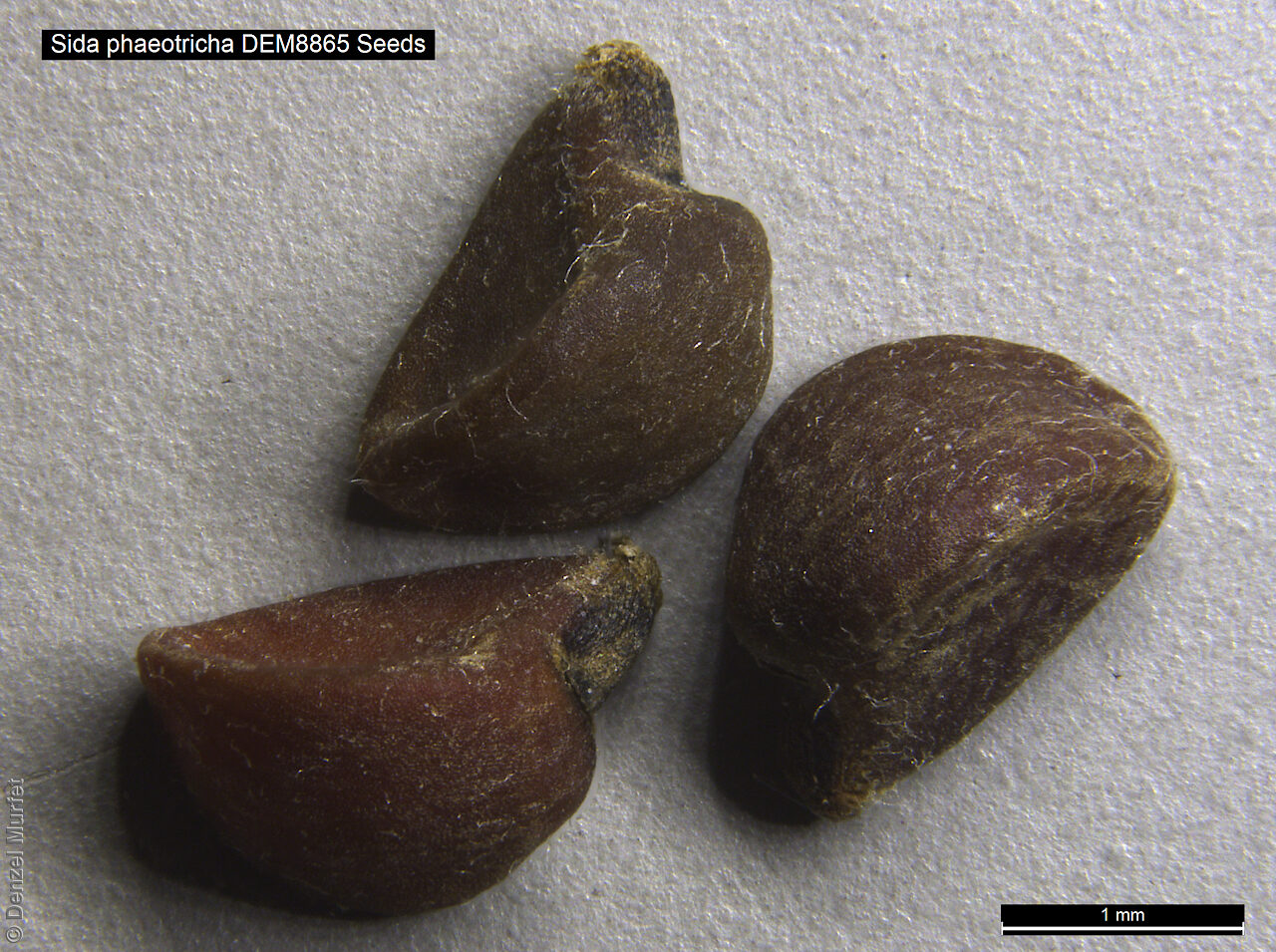
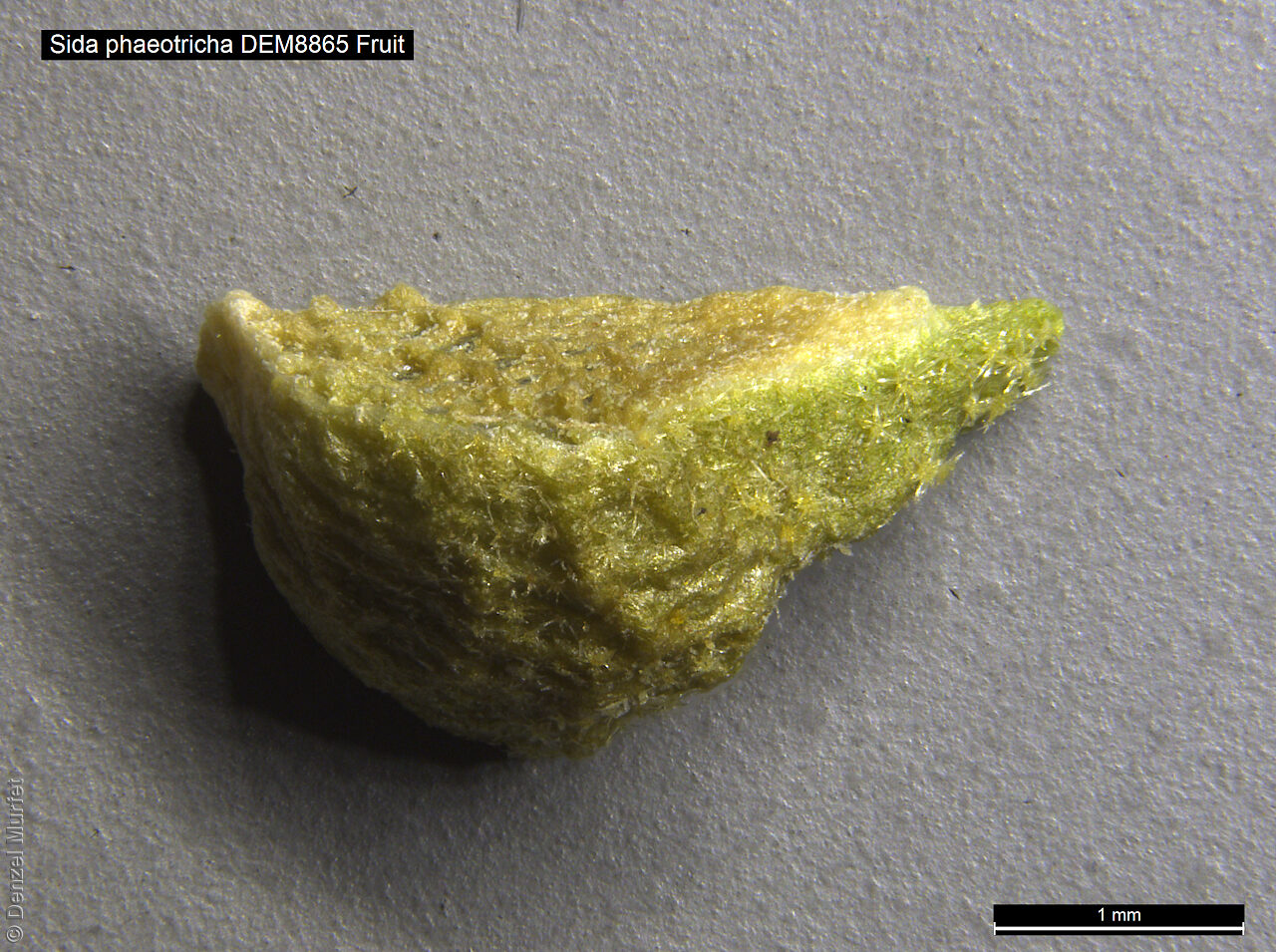
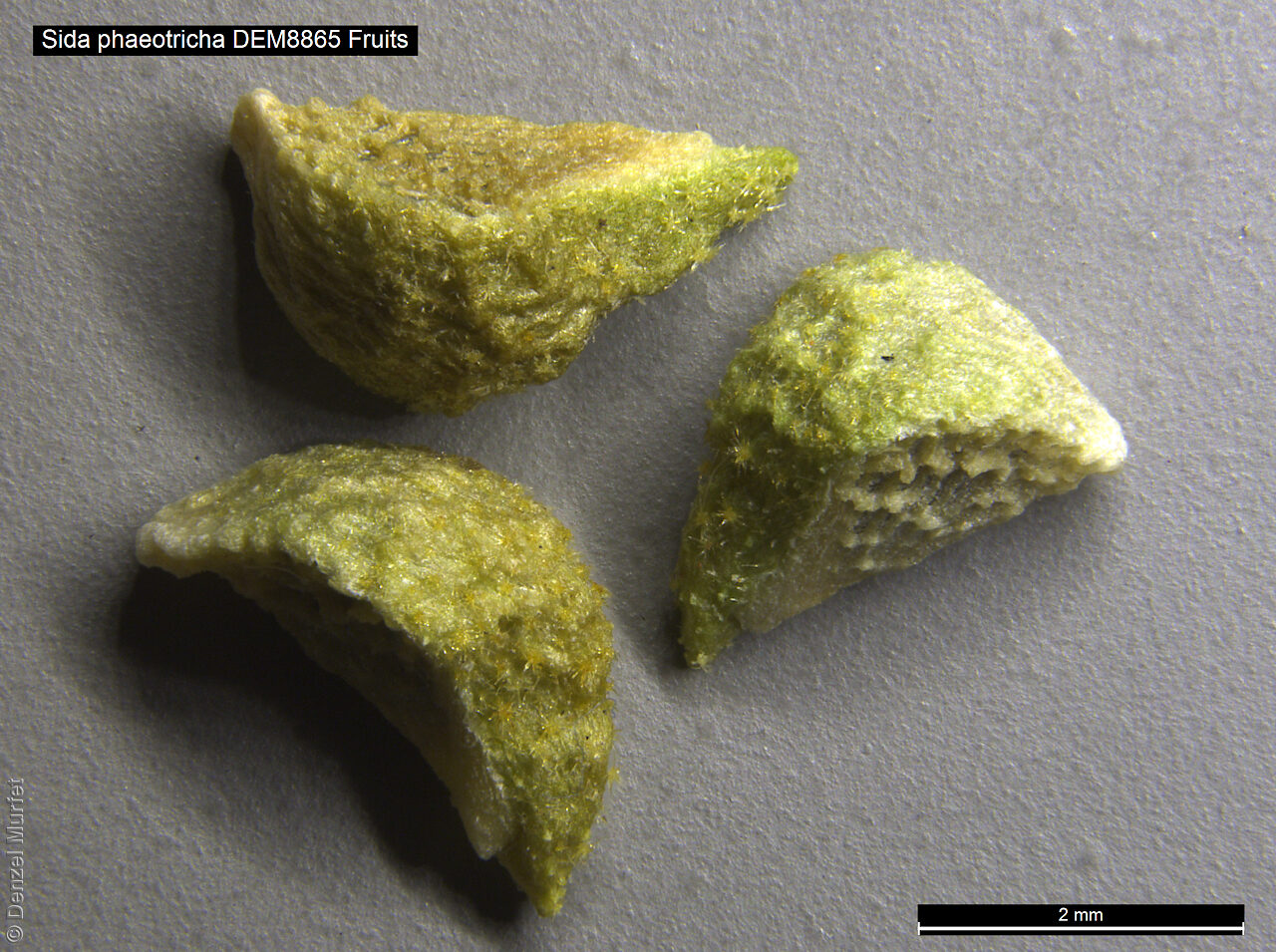

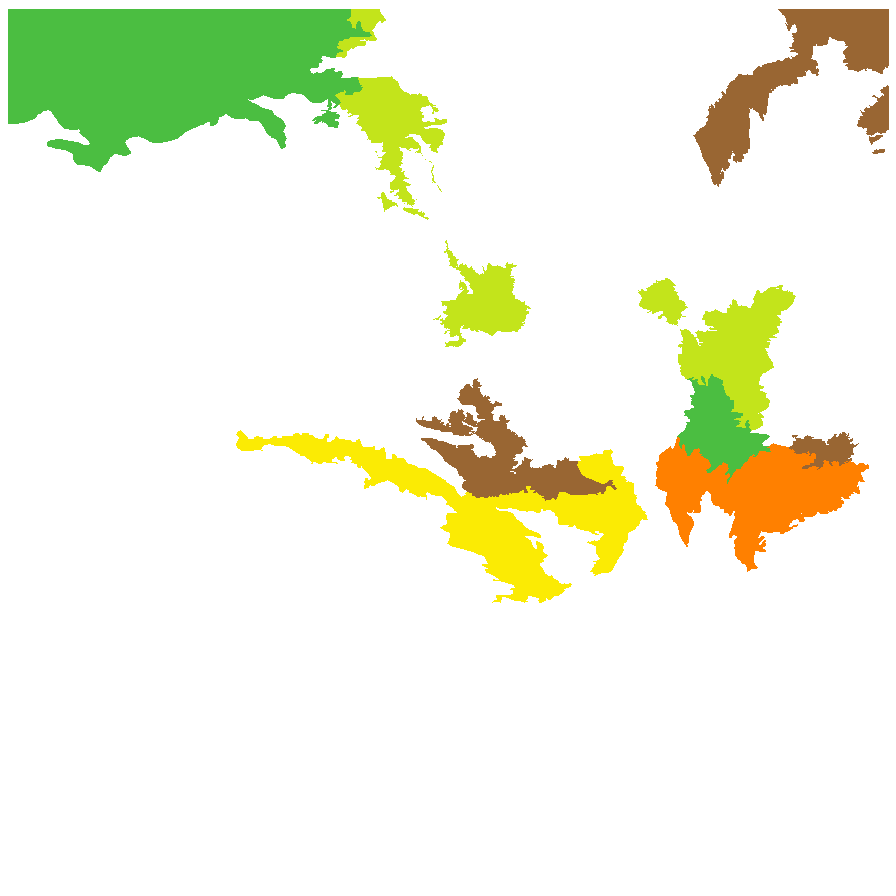
Prior names
Sida cryphiopetala
Sida virgata var. phaeotricha
Common names
Rusty Sida
Tjirin-tjirinpa
Hill Sida
Etymology
Sida a Greek name used by Theophrastus for a water-lily, probably in reference to Nymphaea alba or for a pomegranate tree. Linnaeus transferred the name to Malvaceae changing its primary, pre-Linnaean application. Phaeotricha from the greek 'phae' meaning dark and 'trichos' meaning hairs; possibly referring to its reddish brown or rust-coloured hairs on the younger parts of the plant.
Distribution and status
Found far north-western part, upper Eyre Peninsula, northern Flinders ranges and the Olary Ranges in South Australia, growing on rocky or gravelly ranges and hills. Also found in Western Australia, Northern Territory, Queensland and New South Wales. Native. Common in South Australia. Uncommon in Western Australia, Queensland and New South Wales. Common in the Northern Territory.
Herbarium regions: North Western, Flinders Ranges, Eastern, Eyre Peninsula
NRM regions: Alinytjara Wilurara, Eyre Peninsula, South Australian Arid Lands
AVH map: SA distribution map (external link)
Plant description
Erect shrub to 2 m high, with thick velvety dense hairs, golden or rusty hairs on the younger parts. Leaves ovate to lanceolate, to 75 mm long and 24 mm wide, margin toothed, covered in dense velvety hairs. Inflorescence solitary in the axils of leaves or in axillary clusters of 2-6 yellow flowers. Flowering between July and October. Fruits are hairy brown globular fruit to 6 mm diameter, conical in the centre, with 5 segments. Seed embryo type is folded.
Seed collection and propagation
Collect seeds between September and December. Collect mature fruits, those that are turning pale straw colour and contain dark hard seeds. Place the capsules in a tray and leave to dry for two weeks. Then rub the capsules gently with a rubber bung or by hand to dislodge the seeds. Use a sieve to separate the unwanted material. Store the seeds with a desiccant such as dried silica beads or dry rice, in an air tight container in a cool and dry place. This species has physical dormancy that needs to be overcome for the seed to germinate (e.g. nicking or softening the seed coat).
| Location | No. of seeds (weight grams) | Number of plants | Date collected | Collection number Collection location | Date stored | % Viability | Storage temperature |
|---|---|---|---|---|---|---|---|
| BGA MSB | 500 (1.04 g) 1,200 (2.44 g) | 22-Jul-2017 | DEM8865 North Western | 30-Jun-2018 | 74% | -18°C |
Number of plants: This is the number of plants from which the seeds were collected.
Collection location: The Herbarium of South Australia's region name.
% Viability: Percentage of filled healthy seeds determined by a cut test or x-ray.